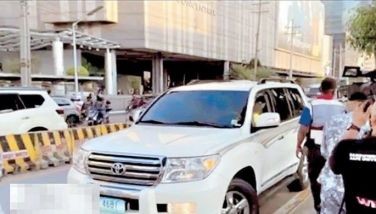Land use and transport
(Part 3 - "Trips")
An interesting proposition last week prompted me to revisit two articles in 2011: "Build schools near where we live." As if it is easy, not to mention cheap, to do just that. Maybe nobody gave it a thought because it seems no one reacted or even mentioned it any further. But I believe it is one of the better ideas so far when faced with traffic congestion woes every day. It is still part of the elusive "integrated land use and transport" that was always suggested, but seldom followed.
We need to revisit first the anatomy of traffic congestion. While many are inclined to say it's because of the number of cars and the limited road space, the counting deals more with "trips" (the technical term is person-trips) rather than vehicles. Increasing car numbers does lead to traffic jams. But maintaining the same number while trips are increased will also cause the same gridlock. On the other hand, even if we increase the car population but decrease the total number of trips, traffic congestion will ease up.
Fortunately, trips are created by people, and as such, can also be eliminated. And there are also trips which are considered "unnecessary" which we will deal with later. As we have stated in the 2011 articles, trips are generated by the segregation of human and economic activities in different areas (land uses), and the need for people to "transfer" between these areas alternately between where they live and work at different times of the day. Thus "traffic" is created, usually at regular times of the day all over the city.
It goes without saying that if we work where we live or somewhere near it, we won't have any need of a "trip," by car, jeepney, or any other metal, polluting contraption, and we can just walk or bike, both of which are also considered "trips" in transportation but belonging to the non-motorized category. That's why we wrote in 2011 "schools, markets, convenience stores, groceries, and a hundred other activities should be near our homes, not halfway across the city." How many of us get a haircut, or a pedicure, or a hundred other mundane chores in humongous malls needing additional car trips? Every time we do that, it adds another trip to our already excessive city daily trips. And a big chunk of our "total daily trips" are actually "unnecessary trips."
While land uses are translated into zones, the "land use and transport" principle extends more to how the zones are used by people and society as a whole -the kind of urban fabric we live in. Do we buy our bread or have our haircut around the corner? Do we walk to a barangay elementary or high school? Is there a convenience store or a small market nearby? Or do we flock to all the malls, oftentimes forgetting why we went there in the first place, but enjoying the air-conditioning nonetheless? Or worse, driving to Fuente Osmeña because you feel like eating "balut?" Of course, with the traffic we have today, you'd probably think twice. (To be continued)
- Latest






















